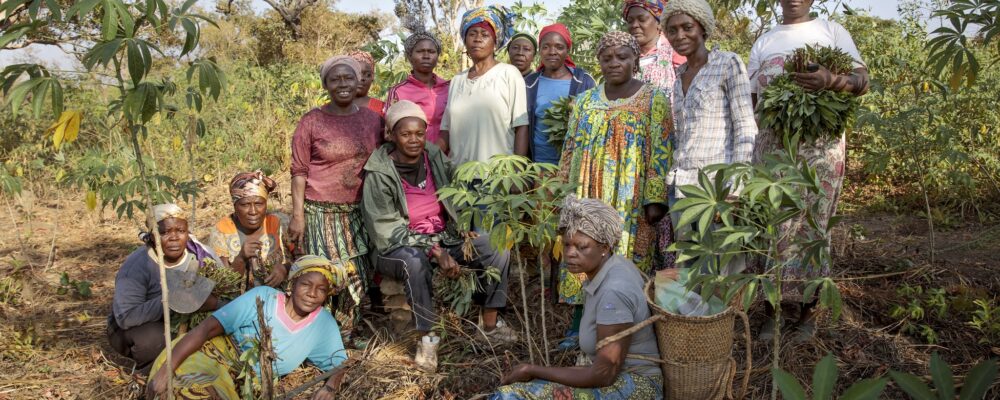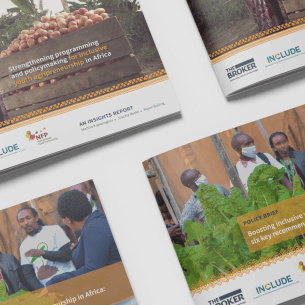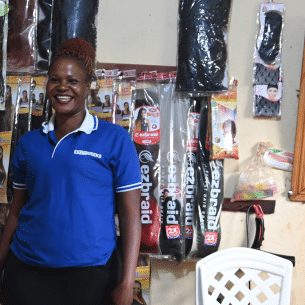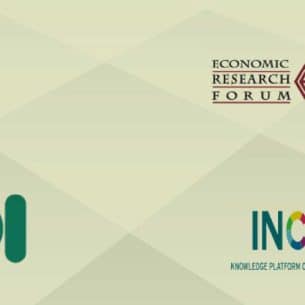
More than 60% of all employed women in Africa south of the Sahara work in agriculture. Yet the region’s women farmers often reap a meager harvest, not because of inclement weather or poor soil quality, but because of their gender—or, more specifically, because of a dense web of laws, policies, programs, and customs that put them at a significant disadvantage.
Closing the gender gap in agriculture will require action on three fronts.
The first is land rights. In most of Africa south of the Sahara, women rarely own land. Instead, women farmers usually access land through a male relative, most commonly a husband, brother, or father. This arrangement leaves them highly vulnerable; a death, divorce, or simply a man’s change of mind can leave a woman farmer landless overnight.
The resulting insecurity affects the way women farm. At constant risk of displacement, long-term productivity-enhancing investments don’t make financial sense. Why build terraces to reduce erosion and improve soil health if someone else can claim the land and its improvements as soon as the work is finished? Why plant an orchard if it can simply be taken away once the final tree is in the ground?
Over the last two decades, many countries have taken important steps to promote and protect women’s land rights. For example, Ethiopia introduced joint land registration—with the names and photographs of both husband and wife included on certificates—thus formalizing women’s rights to the land they farm. Such reform has been shown to lead to increased investment in land, especially by women. The investment rises even higher among women who are also educated about their land rights, highlighting the importance of legal literacy programs.
But land is only the first step. Women also lack equal access to inputs, including fertilizer, better seeds, mechanical equipment, and agricultural extension services that would connect them with information about improved agricultural practices. This inequality is compounded by unequal access to the credit farmers need to purchase inputs. In Kenya, Malawi, Sierra Leone, Zambia, and Zimbabwe, studies have shown that women are less likely to benefit from financial services.
Improving access to financial services and agricultural inputs thus constitutes the second front for empowering women farmers. Development agencies and NGOs have begun working to design woman-focused financial services and programs to improve access to agricultural inputs. African women are also helping one another, with a growing number of women’s organizations, such as microfinance groups, working to improve access to financial services, new technologies, and information. In Kenya, members of such self-help groups are likelier than other women to know about climate-smart agricultural practices, for example.
The final front is perhaps the trickiest: decision-making power. In far too many contexts, women farmers lack the authority to manage the crops they produce or the income they generate. This has far-reaching implications for development.
In Africa south of the Sahara, agriculture is 2-4 times more effective in reducing poverty than growth in other sectors. Moreover, as the Goalkeepers report released last month by the Bill & Melinda Gates Foundation showed, women are likelier than men to invest resources under their control in meeting their children’s needs (food and education).
Given this, enabling women farmers to control their resources is important to achieving not only UN Sustainable Development Goal (SDG) 5—gender equality and empowerment of women and girls—but also many others, including eliminating poverty (SDG1) and ending hunger (SDG2).
Though some progress has been made on all three fronts to empower women farmers, it is nowhere near enough. To encourage and guide further action, my colleagues at IFPRI and I designed the Women’s Empowerment in Agriculture Index, which measures decision-making power, access to resources (including credit), control over income, time burdens, and membership in groups.
By providing insight into the extent and sources of women’s agricultural disempowerment in various contexts, the WEAI—and a later adaptation, pro-WEAI, which facilitates project impact assessments—is helping governments, donors, and NGOs to design effective interventions. So far, the WEAI (including adaptations) has been used by 99 different organizations in 54 countries. For example, WEAI insights guided the design of Bangladesh’s ANGeL project, which aims to identify actions and investments in agriculture that will improve nutrition and empower women.
When Africa’s women farmers thrive, everyone benefits: the women themselves, the children in whom they invest, the communities that they feed, and the economies to which they contribute. With the right investments and policies, Africa’s woman-run farms could produce a bumper crop of development.







